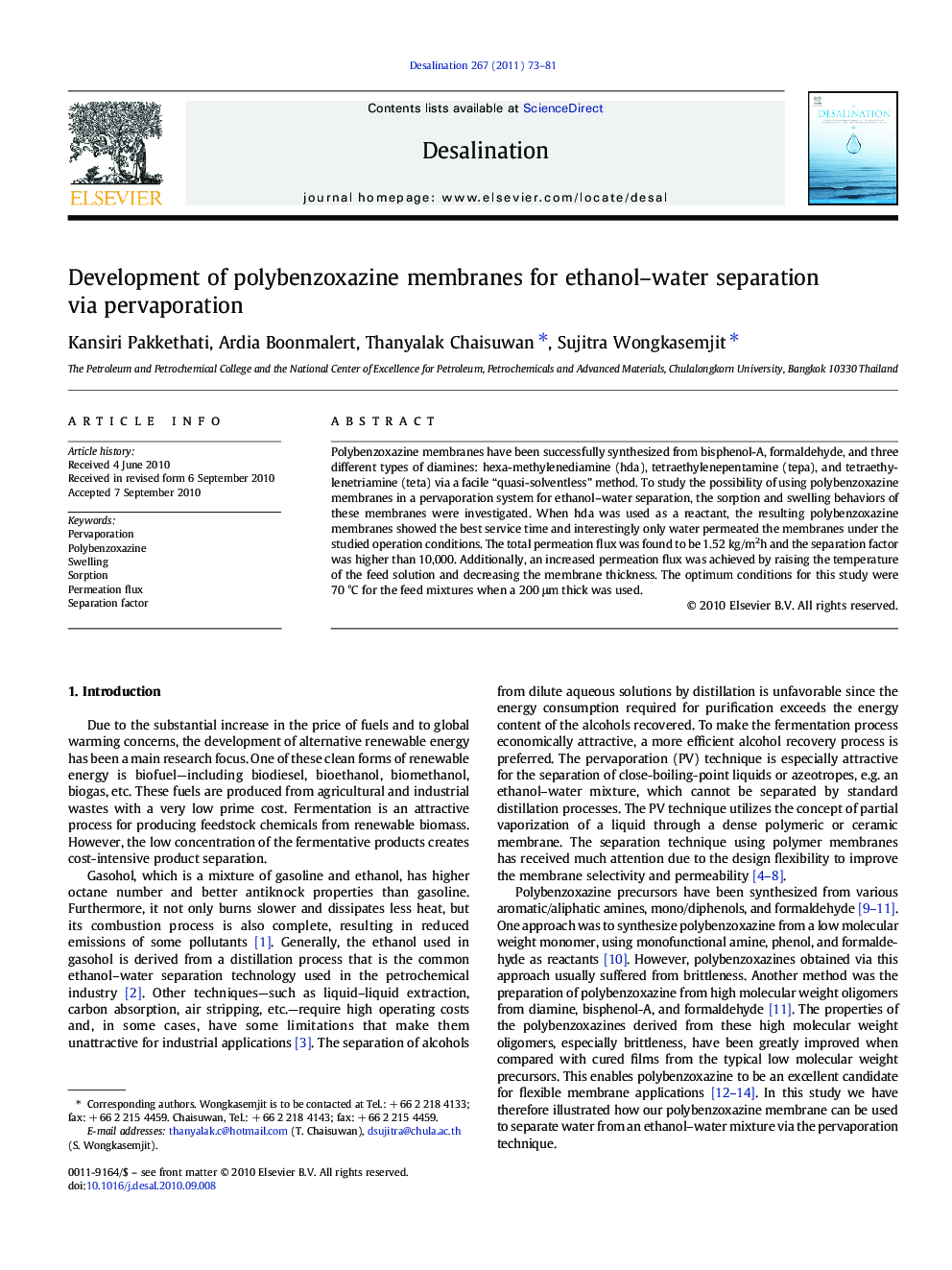| کد مقاله | کد نشریه | سال انتشار | مقاله انگلیسی | نسخه تمام متن |
|---|---|---|---|---|
| 625445 | 882847 | 2011 | 9 صفحه PDF | دانلود رایگان |

Polybenzoxazine membranes have been successfully synthesized from bisphenol-A, formaldehyde, and three different types of diamines: hexa-methylenediamine (hda), tetraethylenepentamine (tepa), and tetraethylenetriamine (teta) via a facile “quasi-solventless” method. To study the possibility of using polybenzoxazine membranes in a pervaporation system for ethanol–water separation, the sorption and swelling behaviors of these membranes were investigated. When hda was used as a reactant, the resulting polybenzoxazine membranes showed the best service time and interestingly only water permeated the membranes under the studied operation conditions. The total permeation flux was found to be 1.52 kg/m2h and the separation factor was higher than 10,000. Additionally, an increased permeation flux was achieved by raising the temperature of the feed solution and decreasing the membrane thickness. The optimum conditions for this study were 70 °C for the feed mixtures when a 200 μm thick was used.
Graphical AbstractFigure optionsDownload as PowerPoint slideResearch Highlights
► High performance of polybenzoxazine membranes used to separate 12% of water in ethanol was obtained.
► Poly(BA-hda), a, shows better physical integrity, even after 120 hours.
► The poly(BA-hda) membrane could be used for more than one week to separate the ethanol–water mixture.
Journal: Desalination - Volume 267, Issue 1, 1 February 2011, Pages 73–81